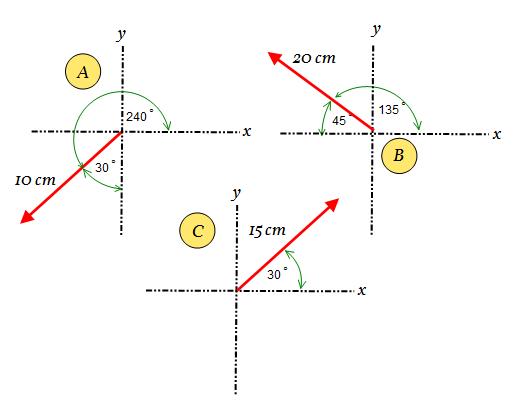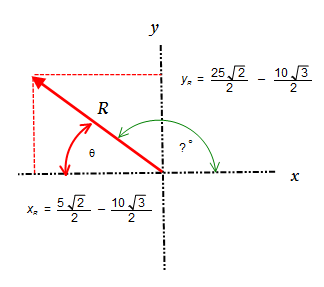Given Vector A: 10cm at 240 degrees, Vector B: 20cm at 135 degrees, Vector C: 15 cm at 30 degrees. How do you add and subtract these three vectors?
1 Answer
I have taken you to a point where you can take over. You need to determine the magnitude of the resultant and its angle.
Explanation:
It is usually a good move to do a quick sketch. In an exam there is no reason why you can not do so on the question paper. Or on rough work paper if it is provided. Emphasising the work 'quick'. Or as an alternative; draw a margin on the right hand side of your answer paper clearly labelling it as rough work and do any sketching etc in that area.

Let vertical component be
Let horizontal component be
(traditionally you would use
Let the resultant vector be
....................................................................................................................
....................................................................................................................
++++++++++++++++++++++++++++++++++++++++++++
+++++++++++++++++++++++++++++++++++++++++++++++
~~~~~~~~~~~~~~~~~~~~~~~~~~~~~~~~~~~~~~~~~~~~~~~~
So
So


